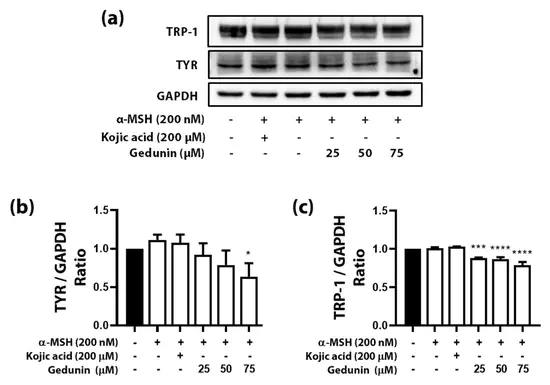Molecular Mechanisms of Anti-Melanogenic Gedunin Derived from Neem Tree (Azadirachta indica) Using B16F10 Mouse Melanoma Cells and Early-Stage Zebrafish

Abstract
Regulation of melanin production via the MC1R signaling pathway is a protective mechanism of the skin of living organisms against exposure to ultraviolet rays. The discovery of human skin-whitening agents has been one of the most intense pursuits of the cosmetic industry. The MC1R signaling pathway is activated by its agonist, alpha-melanocyte stimulating hormone (α-MSH), and mainly regulates melanogenesis. Here, we evaluated the antimelanogenic activities of curcumin (CUR) and its two derivatives, dimethoxycurcumin (DMC) and bisdemethoxycurcumin (BDMC), in B16F10 mouse melanoma cells and zebrafish embryos. CUR and BDMC reduced the α-MSH-induced melanin production in B16F10 cells and also downregulated the expression of the melanin-production-related genes Tyr, Mitf, Trp-1, and Trp-2. Moreover, the biological activity of these two compounds against melanogenesis was confirmed in in vivo experiments using zebrafish embryos. However, the highest concentration of CUR (5 µM) resulted in slight malformations in zebrafish embryos, as indicated by acute toxicity tests. In contrast, DMC did not show any biological activity in vitro or in vivo. Conclusively, BDMC is a strong candidate as a skin-whitening agent.